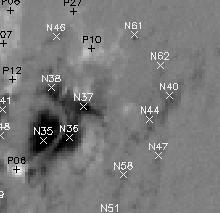
A total of 62 sources (34 positive, 28 negative) were identified. The sub-region in the vicinity of the flare shows a lone positive source (P10) next a stong cluster of negative sources (N35 - N38) and an arc of weaker negative sources.
A flare (M1.1) on 2000-Mar-17 at 11:25 was characterized by
TRACE observers as a "circular ribbon flare" (see the TRACE
Flare Catalog). More commonly flare ribbons
(observed in chromospheric emission) form two distinct bands --- a morphology
to which they owe their name. This two-ribbon configuration has been
succesfully explained by solar flare theories appealing to magnetic reconnection
at a magnetic X-point or neutral point. Such reconnection theories
are intrisically two-dimensional: theoretical arguments suggest that neutral
points are far too uncommon in three-dimensional fields to be a necessary
pre-condition for events as common as two-ribbon flares. Nor could
such a model explain a single circular ribbon.
A related class of models predict that three-diemnsional reconnection will occur at topological magnetic field boundaries called separators and separatrices. To test this hypothesis MURI team members Dana Longcope and Terry Forbes worked with Leon Golub, while at the Intitute for Theoretical Physics, to develop a topological field model of the flare 2000-Mar-17.
The topology of the field is defined by how photospheric sources are
interconnected. The first step in a topological model is an identification
of photospheric sources by grouping concentrations in a magnetogram.
This was done by extracting NOAA 8906 from a full disk MDI
magnetogram made at 11:20.

A total of 62 sources (34 positive, 28 negative) were identified.
The sub-region in the vicinity of the flare shows a lone positive source
(P10) next a stong cluster of negative sources (N35 - N38) and an arc of
weaker negative sources.
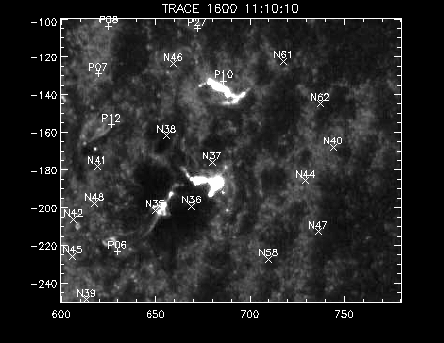
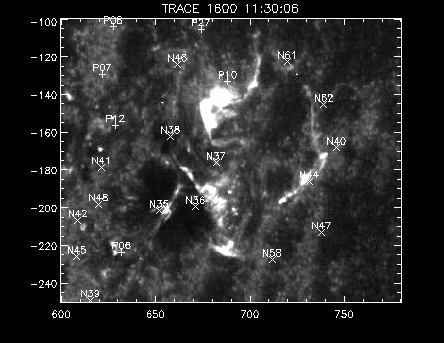
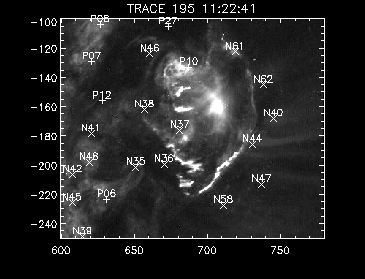
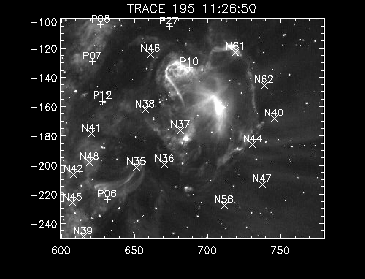
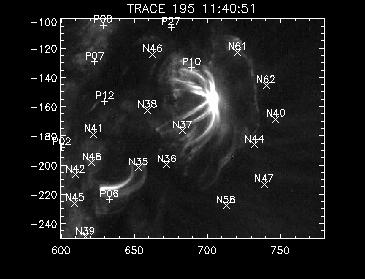
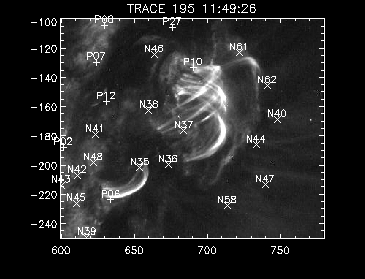
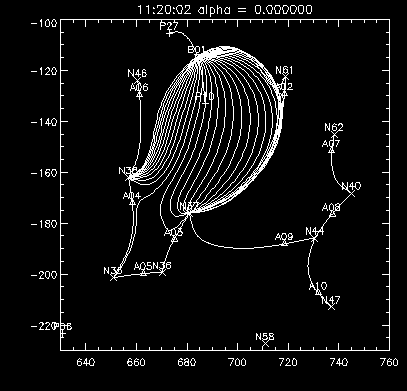

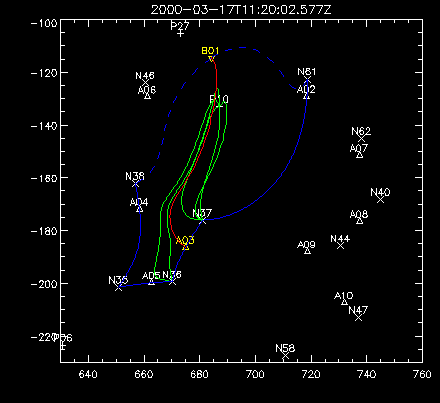
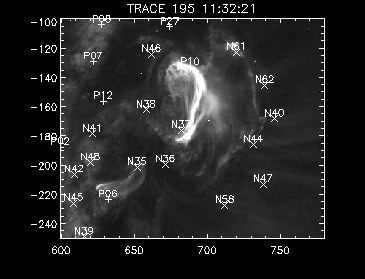
A linear force-free field provides a second coronal field model.
In this example the current density is assumed to be proportion to the
magnetic field with a constant of proportionality of +0.012 Mm-1
(not an atypical value for an active region). The force-free field
contains a separatix corresponding to the one in the potential field, but
somewhat distorted by currents.
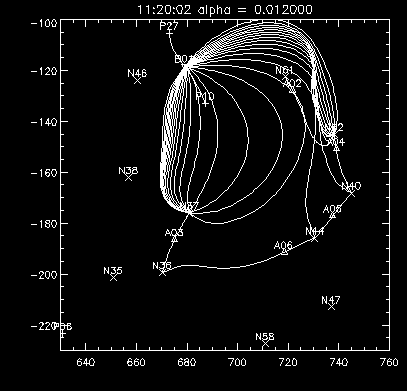

A notable improvement is that P10 connects to all of the negative sources
in the arc. Furthermore, the model field lines bend to the right
as do the coronal loops.
In the future the same topolical field modeling technique will be applied to MURI's case study flares in AR 8210,
MURI-MSU Nugget June 2002
Stéphane Régnier, Richard Canfield, Dana Longcope